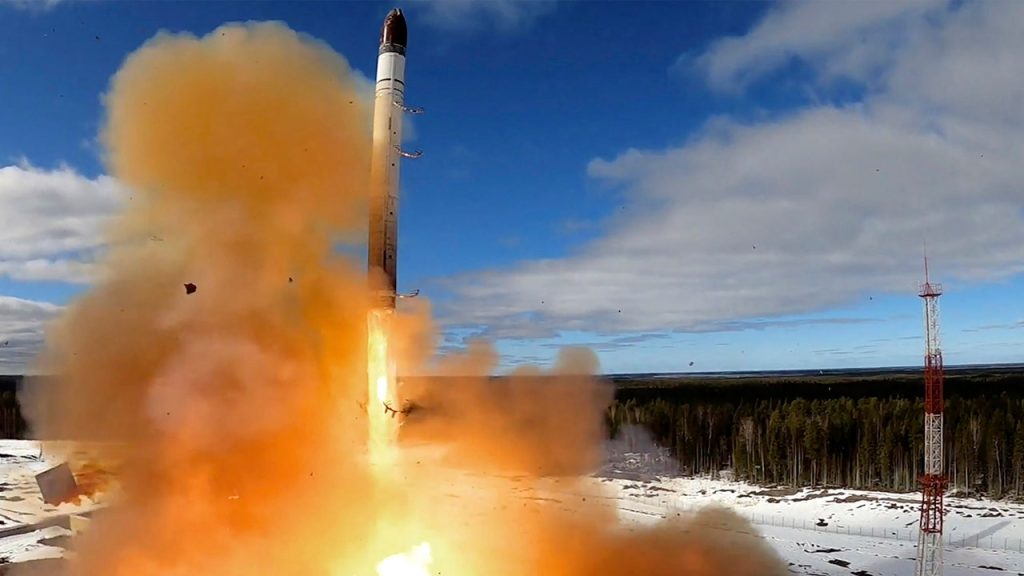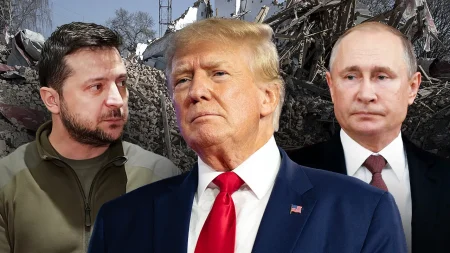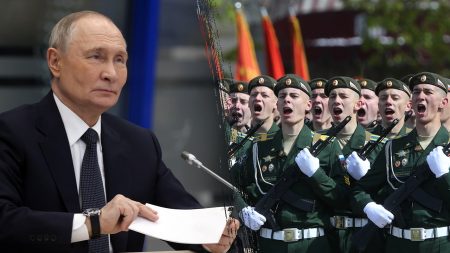Russia’s Nuclear Advancements Amid Ongoing Ukraine Conflict
In a concerning development on the global security stage, Russian President Vladimir Putin announced what he described as a “huge success” in testing Russia’s Poseidon nuclear-capable underwater drone system. Speaking on Wednesday, Putin detailed how Russia had not only successfully launched the drone from a carrier submarine but also activated its nuclear power unit – a technological achievement he claims is unmatched globally. “There is nothing like this,” Putin boasted, further emphasizing that “the Poseidon’s power significantly exceeds the power of even our most promising Sarmat intercontinental-range missile,” referring to Russia’s notorious SATAN II model. This announcement marks a significant escalation in Russia’s strategic weapons program at a time when international tensions are already heightened due to the ongoing conflict in Ukraine.
The Poseidon system, which Russia first unveiled in 2018, represents a particularly troubling advancement in nuclear delivery systems. Designed to travel across oceans at high speeds using nuclear propulsion, the underwater drone can reportedly carry a massive warhead capable of creating destructive radioactive waves that could devastate coastal targets. While the operational status of this weapon has not been independently verified by Western intelligence, Putin’s confidence in discussing its capabilities suggests significant progress in its development. Alongside the Poseidon, Putin also highlighted advancements in the Burevestnik nuclear-powered cruise missile, which Russian officials claim can fly indefinitely and evade missile defense systems. According to Russian reports, a recent test of the Burevestnik traveled an impressive 8,700 miles, a claim that has raised serious concerns among Western defense officials.
In response to Russia’s recent weapons testing, former President Donald Trump offered pointed criticism while speaking to reporters aboard Air Force One. Trump suggested that Putin “should end the war in Ukraine, not test missiles,” emphasizing America’s own strategic capabilities by noting that the U.S. has “a nuclear submarine right off their coast… so it doesn’t have to go 8,000 miles.” Trump’s message carried a clear warning: “We’re not playing games with them either.” The former president further criticized Putin’s priorities, arguing that instead of focusing on advanced missile development, the Russian leader “ought to get the war ended… a war that should have taken one week is now in its fourth year.” These comments highlight the growing frustration among Western leaders regarding Russia’s continued military aggression in Ukraine while simultaneously advancing its nuclear capabilities.
The timing of Putin’s announcement about these weapons tests coincides with an intensification of Russia’s offensive operations in eastern Ukraine. Moscow claims to have recently seized several frontline villages and to be closing in on the strategically important city of Pokrovsk in the Donetsk region. Earlier in the month, Putin made the bold assertion that Russian forces had captured nearly 5,000 square kilometers of Ukrainian territory since the beginning of the year—though Ukrainian officials have disputed this claim. This military escalation on the ground, coupled with Putin’s boasting about nuclear advancements, appears designed to project an image of Russian strength and resolve in the face of continued Western support for Ukraine.
What makes the Poseidon system particularly concerning to security analysts is its unique design, which potentially offers Russia a means to bypass traditional missile defense systems. Unlike conventional intercontinental ballistic missiles that follow predictable trajectories through space, the Poseidon is designed to travel underwater at great depths, making it exceptionally difficult to detect and intercept. If operational as claimed, this weapon would represent a significant challenge to the strategic balance that has governed nuclear deterrence for decades. Similarly, the Burevestnik cruise missile’s reported ability to fly indefinitely using nuclear power could allow it to take unpredictable flight paths to evade air defense systems. These weapons appear designed specifically to counter America’s extensive missile defense infrastructure, potentially undermining the security architecture that has helped prevent nuclear conflict since the Cold War.
The international community’s response to these developments has been notably measured. U.S. and NATO officials have not independently confirmed the Poseidon test, and the Pentagon has declined to comment on Putin’s claims. This cautious approach likely reflects a desire not to escalate tensions further through public statements, while intelligence agencies work to verify the actual capabilities and operational status of these weapons systems. However, the lack of public confirmation should not be interpreted as dismissal of the threat these weapons potentially pose. The development of novel nuclear delivery systems like the Poseidon underwater drone and Burevestnik cruise missile represents a troubling new chapter in nuclear weapons technology—one that could potentially upset the strategic stability that has, despite periods of tension, largely maintained peace between nuclear powers for over seven decades. As Russia continues to advance these capabilities while simultaneously prosecuting its war in Ukraine, the international community faces difficult questions about how to respond to these dual challenges to global security.














